Petechiae as a manifestation of insignificant to fatal diseases?

They are caused mechanically by pressure or impact on the skin. However, they are also an accompanying phenomenon of many diseases and bleeding conditions and often an indicator of a correct diagnosis.
Article content
They occur as a concomitant phenomenon of various pathological processes in adults, as well as in children. They can be eliminated only by proper treatment of the primary disease.
They are a consequence of mechanical pressure or blows? They are a concomitant of many diseases. They can also be caused by chemicals and drugs.
We are talking about petechiae or so-called petechial hemorrhages.
These are tiny dots of vascular (hairline) bleeding. They occur most often in the subcutaneous tissue on various parts of the body, but also on mucous membranes and internal organs.
What are petechiae and how do they form?
Petechiae are not a disease. However, they are a symptom that indicates a very wide range of diseases. Petechial hemorrhage is actually bleeding from the smallest blood vessels in the human body - the hair vessels (capillaries). These are very thin blood vessels, the wall of which can be damaged even by local pressure without the need for other diseases.
When damaged, either mechanically or by a disease condition, the wall of the capillary ruptures, causing slight bleeding into the subcutaneous tissue, mucous membranes and organs.
This bleeding is not serious, but the patient's general condition and development depends on the underlying cause, which may be a fatal disease such as leukaemia.
Petechial haemorrhage on the skin manifests itself as local redness, sometimes tinged with purple. On closer inspection, we can see tiny dots of haemorrhage.
Petechiae may appear as a single spot but may also affect larger areas of skin.
In this article, the mechanical causes of petechiae and the most common conditions from various medical disciplines that present with petechial hemorrhage and other types of bleeding simultaneously are discussed.
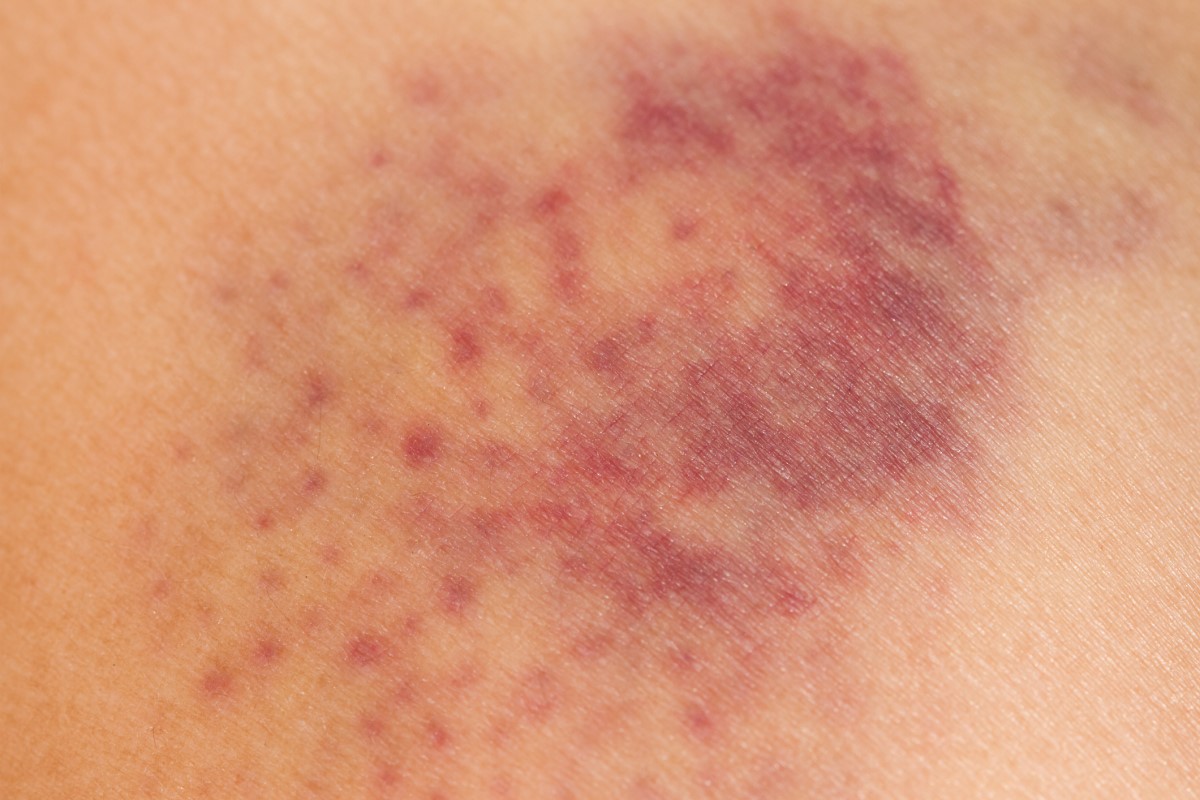
Mechanical origin of petechial haemorrhage
Mechanical capillary hemorrhage arises relatively easily. Mechanical pressure, either overpressure (squeezing, punching, kicking) or underpressure (sucking, sucking), disrupts the delicate vascular walls and bleeds into the subcutaneous tissue. This is a common occurrence that can be observed routinely.
Forensic pathologies are of importance in criminalistics, where they are evidence of violent crimes, such as blows during assault, handcuffing of the wrists, pressure exerted on the mouth to silence or during strangulation.
Infectious diseases
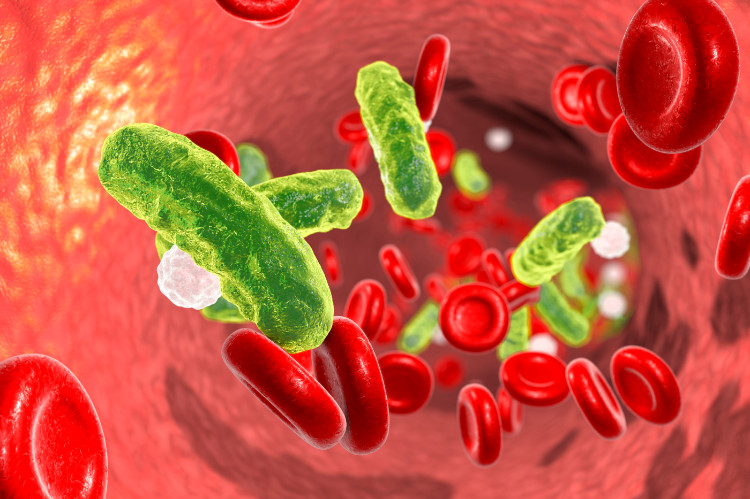
Infectious meningitis and encephalitis
Infectious meningitis and encephalitis are neuroinfections caused by microorganisms, most commonly bacteria and viruses.
Encephalitis is an inflammatory disease of the brain. Infection of the meninges is called meningitis. Infection can affect both the brain and its membranes at the same time. In this case, we speak of meningoencephalitis.
It is manifested by high fever, general weakness, fatigue, apathy, disturbances of consciousness, severe headache, severe vomiting, photophobia, meningeal irritation (stiffness of the neck).
Bacterial forms of the disease cause petechial haemorrhage as a consequence of the septic state. Disseminated intravascular coagulopathy - DIC - may develop (see below).
Petechiae are most commonly found on the trunk around the umbilicus. This is a serious symptom, especially in children, which, together with other symptoms, indicates a possible meningococcal infection. Of course, they are also found on the extremities and other parts of the body.
Infective endocarditis
Endocarditis is an inflammation of the endocardium (the inner lining of the heart). It also affects the heart valves. Often bacteria attach themselves to the valves primarily and as a consequence, endocarditis occurs secondarily. Given the location of the inflammation, it is clear that this is a serious disease. It can cause heart failure, arrhythmias and even cardiac arrest.
The onset of the disease starts with fever, chills, general weakness, fatigue.
The bacteria rapidly spread into the bloodstream, causing sepsis with possible disturbances of consciousness. As is common in septic states, minor subcutaneous haemorrhages occur.
Infectious mononucleosis
In 80 to 90 % of cases, the causative agent is the human EB virus (Epstein-Barr virus). This is a type of herpes virus, but it can also be caused by adenoviruses, toxoplasma gondii or HIV virus. The incidence is worldwide and typical of childhood.
The disease may not manifest itself, or it may present with non-specific influenza-like symptoms. The typical clinical picture includes weakness, malaise, fever, sore throat, massive tonsillar and oral plaque as in tonsillitis with minor bleeding on the palate but also in the subcutaneous tissue, and enlargement of regional nodes.
There is enlargement of the spleen and liver, swelling of the eyelids and face.
Fulminant hepatitis
Fulminant hepatitis B is a rare type of viral hepatitis (inflammatory liver disease). It accounts for about 0.1 to 1 % of all viral hepatitis and runs concurrently with hepatitis B. It is a severe disease with a very rapid and dramatic course leading to massive liver necrosis and liver failure.
It is characterised by a high mortality rate. It progresses very rapidly and leads to liver failure within a few weeks. It manifests as a hepatic encephalopathy arising in the course of acute hepatitis.
The onset of the disease is typical of other infections with subfebrile illnesses, weakness, malaise, reduced physical activity and fatigue. Hepatic disturbances are later manifested as indigestion, enlargement of the liver and spleen, icterus (yellow discoloration of the skin), subicterus (yellow discoloration of the sclera), oedema, subcutaneous haemorrhage, disturbances of consciousness, hepatic coma and even death.
Hemolytic uremic syndrome
Haemolytic uraemic syndrome is one of the most common causes of acute renal failure in childhood. The causative agent is 90% Escherichia coli in the gastrointestinal tract. Haemolytic anaemia, thrombocytopenia with subsequent renal failure is at the forefront of the disease.
It is manifested, including symptoms of acute renal failure, by neurological problems such as muscle spasms, cardiac problems such as cardiac dysfunction with an increased risk of heart attack. The lungs, liver and pancreas are also affected. The patient is weak, malaise, feverish and haemorrhagic on the skin due to weakened blood vessels and haemolysis.
Extraneous infectious diseases
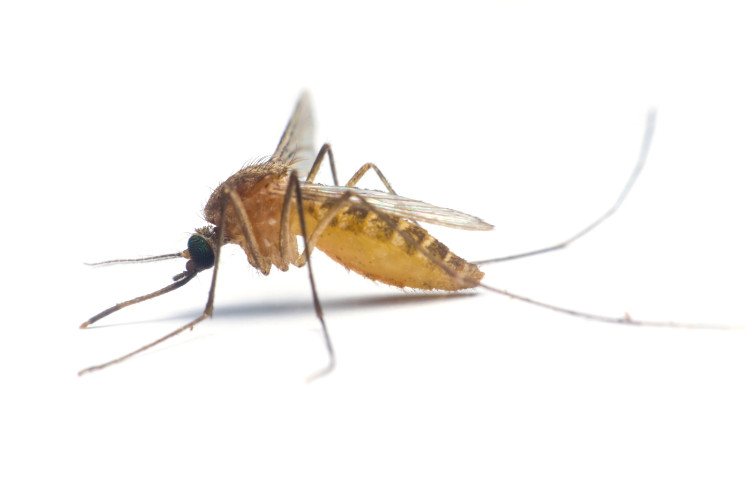
Dengue haemorrhagic fever
It is a viral disease belonging to the haemorrhagic fevers. The name comes from the Spanish and translates as unnaturalness, after the unnatural posture of the patient.
It is caused by a flavivirus of the family Flavioviridae (RNA viruses) and is transmitted by the mosquitoes Aedes aegypti or Aedes albopictus (see also yellow fever).
Originally found only in Africa, it later spread to Asia and a few cases have been reported from the Americas.
In the majority of cases, it manifests itself only mildly with flu-like symptoms. In more severe cases, it starts with high temperatures of more than 40 °C, chills, head, muscle and joint pain, and less often vomiting.
Transiently, the symptoms subside, followed by a recurrence of the temperature and the appearance of petechial haemorrhages on the skin, up to extensive exanthema with maculopapulomatous rashes.
Hemorrhagic Hanta fever with renal syndrome
The causative agent of the disease is a hantavirus of the family Bunyviridae (RNA viruses). The source of infection is rodents. It is a zoonosis and is transmitted by direct contact with the faeces, urine, saliva of an infected animal, rarely by biting. The disease occurs in Europe, Siberia, the Balkans and North America.
It presents with fever, headache, vomiting, weakness, fatigue, increased sleepiness. In more severe cases, symptoms such as high fever and haemorrhagic signs such as bleeding from the nose and gums, petechiae on the skin are present (in some cases, haemorrhagic states may be absent).
In the most severe cases, a picture of acute renal failure can be observed, with pain in the sacral region of severe intensity of high temperature and hemorrhagic symptoms such as blood in the urine and the development of a shock state.
Plague (pestis)
The so-called Black Death occurred predominantly in the past. This serious disease has wiped out a large number of people. The causative agent of the disease is the bacterium Yersinia pestis. The source of infection is rats, from which the infection is transmitted to fleas attached to these rodents.
A person can become infected by being bitten by this flea.
The point of entry is the site of the flea bite or the respiratory tract. At the point of entry, there are localised changes in cellular damage to the skin, blood and lymph nodes. After a short incubation period, fatigue, weakness, high fever, chills, headache, muscle and abdominal pain set in.
There is a tremendous acceleration of the heart. The lymph nodes in the armpits and inguinal region are enlarged and suppurated. Punctate haemorrhages appear on the skin and suppurative inflammations burst. Large oozing wounds with dark secretions form.
Blood diseases
.jpg)
Haemophilia
The most well-known bleeding condition is haemophilia. We are talking about a congenital disorder with a defect in the production of coagulation factor VIII (haemophilia type A) and IX (haemophilia type B) in the blood to varying degrees.
This factor is essential for normal blood clotting. Its absence leads to serious complications in which the patient may bleed to death.
In addition to prolonged bleeding due to impaired blood clotting, haemophiliacs also experience spontaneous bleeding conditions when the blood vessel wall is injured or damaged. Bleeding from the nose, gums, urination of blood, petechial haemorrhages into the subcutaneous tissue and haematomas all over the body without any apparent cause are common.
Von Willebrand disease (vWD)
This is the most common type of bleeding disorder in general. People suffering from this disease have a deficiency of the so-called von Willebrand factor (vWD factor). This is responsible, together with platelets, for the proper clotting of blood. vWD factor helps to heal the bleeding blood vessel, in which the platelets then form a plug - a scab.
Some of us may not even know that we have this disease. The disease has three stages. The first two stages are only very mild. Most often they are petechial hemorrhages in the skin or more severe bleeding from trauma.
The third degree is more serious, where the patient may bleed into the skin or muscles without an obvious mechanism.
Thrombocytopenia, thrombocytopathy and thrombocytopenic purpura
The term idiopathic thrombocytopenia (ITP) refers to a reduced number of platelets (thrombocytes) in the blood. The lack of platelets is directly responsible for bleeding at various sites. The most common are petechiae and hematomas.
Bleeding from mucous membranes (nose, gums). Sometimes it is diagnosed accidentally, for example, in excessive bleeding after a tooth extraction. Similar problems are caused by thrombocytopathy, in which excessive bleeding occurs due to a malfunction of platelets on the basis of another internal disorder or disease.
Thrombotic thrombocytopenic purpura (TTP) or even Moschcowitz syndrome is a severe form which has a severe course and an unfavourable prognosis compared to ITP. In this disease, the inner lining of blood vessels is damaged and excessive pathological breakdown of platelets occurs. This results in an excess of Willebrand factor with the formation of microthrombi.
The onset of the disease is sudden and violent. Haemolytic anaemia occurs. This results in the patient being weak with high fevers, disturbances of consciousness, muscle spasms and headaches. Spotty haemorrhages appear on the skin from excessive breakdown of red blood cells. The patient dies from kidney failure or haemorrhage into a vital organ such as the brain.
Disseminated intravascular coagulopathy (DIC)
This is a very serious disease in which platelet activity increases. As a result of increased coagulation activity, microthrombosis occurs in peripheral blood vessels.
The patient is at risk of obstruction (blockage) of these vessels, their lack of blood supply and necrosis. Very quickly, coagulation factors are depleted, the condition paradoxically reverses and a platelet deficiency with bleeding symptoms develops.
Haemorrhagic diathesis is a serious condition. The patient bleeds from almost everywhere. Blood is found in the stool (melena), in the vomit (haematemesis), in the urine (haematuria), but also in the subcutaneous tissue by the formation of petechiae and unstoppable bleeding from wounds.
Leukaemia
Leukaemia is a terrifying disease. It is one of the malignant diseases of the blood. The pathophysiological mechanism of leukaemia is the proliferation and accumulation of immature forms of leucocytes (white blood cells) in the bone marrow. Their excess quantity hinders the process of normal blood formation.
Almost from the beginning, patients are pale, tired, lethargic, have an appetite, lose weight and become short of breath very easily. A very prominent accompanying symptom is bleeding. Leukaemics often have petechiae and bruises all over their bodies, as well as nosebleeds.
Vascular disease
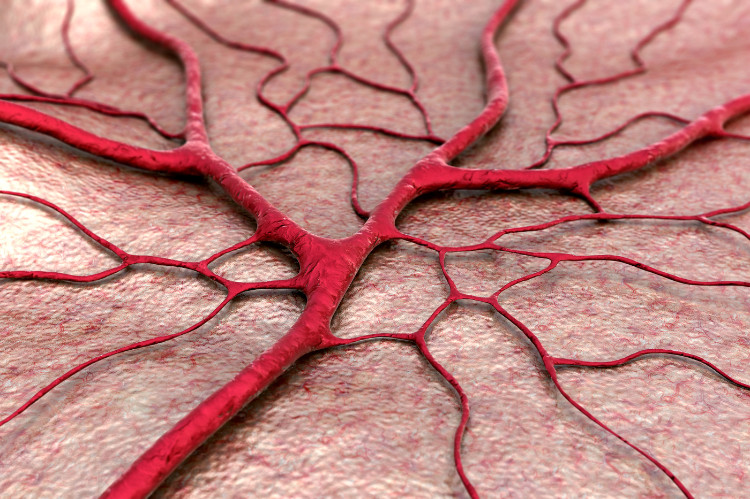
Vasculitis (inflammation of blood vessels)
A systemic inflammatory disease of the blood vessel wall is called vasculitis. It can affect blood vessels in any part and in any organ.
The inflammatory process on the blood vessel leads to its thickening, narrowing of the patency with frequent thromboses (blood clots) and necrosis (tissue death).
In some places, the blood vessel wall becomes pathologically enlarged, which is called an aneurysm (bulging of the blood vessel wall).
There are several types of vasculitis. They affect all types of blood vessels in the human body (arteries, veins, hair vessels). The inflammatory process weakens the blood vessel and it often bursts with subsequent bleeding.
When the smallest blood vessels, the hair vessels (capillaries), are affected, bleeding into the skin and subcutaneous tissue occurs. This is called capillary or even petechial (dot-like) bleeding.
Schönlein-Henoch purpura
Schönlein-Henoch purpura belongs to the class of vasculitides. It is a very rare, rare disease typical of childhood. The cause has not yet been identified. The only certainty is that it is not hereditary.
It is believed that its causative agents are microorganisms (viruses, bacteria) that affect the upper respiratory tract and are much more common in children than in adults.
It is classified as a systemic vasculitis. It affects the capillaries (hair cells) in the skin, kidneys and intestines. Inflammation of the hair cells causes them to rupture (burst), resulting in small capillary haemorrhages into the subcutaneous tissue on the skin.
They appear on the skin as little noticeable, dot-like bleeds. They gradually turn dark red to purple and begin to merge into larger areas. They look like a haematoma (bruise) and can be seen anywhere on the body, but most commonly on the lower limbs.
Diseases of the immune system
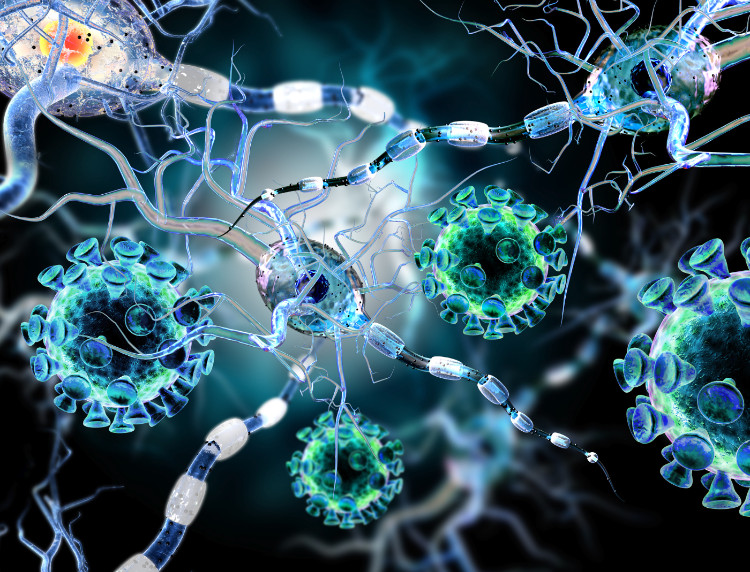
Lupus erythematosus
A very dangerous autoimmune disease is lupus erythematosus. It is a disease in which the body's own immune system attacks the organs and tissues of the body.
The trigger can be genetic factors, immune disorders, infections, hormonal influences, drugs, toxins, chemicals, etc. It occurs in a significant preponderance in women - 9:1 compared to men.
Lupus usually presents with a typical butterfly-shaped exanthem on the face bilaterally around the cheekbones, below the eye sockets, which has significant diagnostic value.
This serious disease affects all organs and tissues, including blood vessels, which weaken with subsequent rupture and haemorrhage. Capillary haemorrhage is manifested by petechiae.
Interesting information in the article.
Liver disease

Cirrhosis of the liver/alcoholic hepatopathy
Cirrhosis of the liver is a common disease. The causes are varied, but the most common triggering factor is alcohol, then drugs and diseases such as viral hepatitis.
Liver cirrhosis is a chronic diffuse disease of the liver. Its cells (hepatocytes) are damaged under the influence of the provoking cause, they begin to necrotize (die) and undergo destruction to total remodeling by replacing the dead parts with connective tissue in the presence of the disorder.
It manifests itself by indigestion, faeces, menstruation, oedema, nocturnal urination, enlargement of the liver, abdomen, yellow discoloration of the skin and spider nevi on the skin. Later in the stage of decompensation, fatigue, weakness, exhaustion, slowed reactions, back and joint pain, weight loss, ascites, clubbed fingers, white nails, smooth tongue are associated.
Haemorrhagic conditions, the so-called haemorrhagic diathesis, are also present. They are manifested by bleeding from the nose, gums, stomach, oesophageal varices, petechial haemorrhage into the subcutaneous tissue and the formation of haematomas.
Hepatic encephalopathy
Hepatic encephalopathy can develop as a result of advanced liver disease such as cirrhosis, but also its other diseases. This is damage to the brain by ammonia found in the portal, hepatic circulation when the detoxification function of the liver is impaired.
Neuropsychiatric disturbances are brought to the fore by central nervous system disturbances. They are manifested by frequent mood changes, distractibility, emotional instability, intellectual impairment, aggressiveness, hallucinations, fatigue, excessive sleepiness. Haemorrhagic diathesis is present, as in liver cirrhosis, with petechiae to haematomas.
Subcutaneous haemorrhages caused by drugs
Antiplatelet drugs are drugs that directly affect the composition of the blood by blocking the activity of platelets - they have an antithrombotic effect. They are used to prevent sudden conditions in cardiology, neurology, as well as other medical disciplines.
They reduce the risk of acute myocardial infarction, stroke, pulmonary embolism or embolization to the lower limbs in patients at risk. In increased amounts, bleeding conditions (petechiae, bruising, blood in the urine, epistaxis, melena...)
The most well-known drug in this group is acetylsalicylic acid (acylpyrine, anopyrine). The antiplatelet effect of these available drugs should be thought of by anyone who routinely uses them to treat pain or fever. They used to be used against fever on a regular basis, but today this is not recommended.
However, petechial hemorrhages have also occurred with the use of some types of analgesics, corticosteroids, steroids and antidepressants.
Vitamin C deficiency
Vitamin C is important for the human body mainly due to its positive effect on the immune system, it helps in faster regeneration of the body, accelerates wound healing, has a beneficial effect on teeth, bones and cartilage. It helps in the absorption of iron. The body cannot make it on its own, so we have to supplement it from the diet.
Its deficiency leads to immune disorders, frequent infections and inflammation, slower metabolism, problems with teeth and bones, anaemia and bleeding. Today, a very rare vitamin C deficiency disease is called scurvy.
scurvy is characterised by anaemia leading to general weakness, joint and muscle pain and bleeding (most commonly petechial), bleeding gums and teeth.
Related










